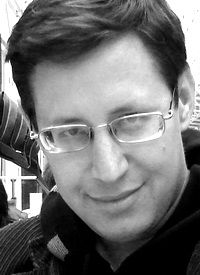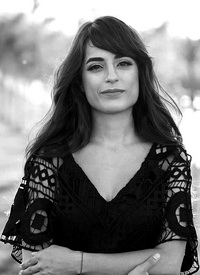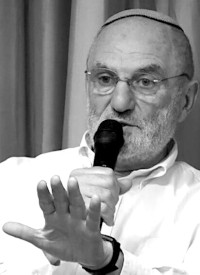
The years that followed the collapse of the USSR saw some of the worst peacetime declines in living standards in history, and the brunt was endured by the working class throughout the former Soviet Republics. The five years that followed the Euromaidan coup and the civil war in Donbas have brought even deeper lows to Ukrainians, from attacks on healthcare and pensions by the government, to failing infrastructure, to new calamities arising from the civil war and the rise of neo-Nazi gangs throughout the country. This article will discuss the current developments in Ukraine and the perspectives going forward.
Five years ago, the so-called Maidan Square movement overthrew the Yanukovich government and the Western media was full of praise. This was supposed to be the beginning of an era of democracy and prosperity with the help of the West. In reality, one gang of thieving capitalist oligarchs was replaced by another and the looting continued. Five years later, what we have is brutal austerity, a generalised collapse of living standards and a regime based on the suppression of democratic rights and the legalisation of far-right paramilitary gangs, all covered in the veneer of the glorification of WWII-era Nazi collaborators.
It has also now become clear that the final trigger for the removal of Yanukovich, the massacre of over 50 people on February 20, 2014, had been in fact staged by leading figures at the top of the Euromaidan movement.
Domestic austerity
The overthrow of the Yanukovich government and the installation of a strictly pro-Western (read pro-NATO and IMF) government and the outbreak of the civil war in Donbas gave the population a shock unlike any since the ‘90s. This has given the Poroshenko government and their foreign backers a free hand to inflict austerity not seen since that time.
The education system was one of the first targets, with hundreds of grade-level schools being closed over the last five years, especially in rural areas. This has been combined with a 2017 law to prohibit schools in minority languages. This is mostly targeting Russian-language schools in a country where 15 percent of people count it as their native tongue, with another 22 percent counting both Ukrainian and Russian – and this is not including the primarily Russian-speaking Crimea and Donbas, still claimed by Kiev. Other minority languages such as Hungarian will also be affected. The targeting of minority languages is part of a general policy of imposing reactionary Ukrainian nationalism, but it is also connected with the overall austerity cuts to the Ukrainian education system.
The worsening economic situation has led to a skyrocketing in the prices of basic goods relative to the salaries of the average worker. This can be seen in the decrease in per-person consumption of food items across the board. The soaring price of natural gas has forced many Ukrainians to live in the cold. An additional 23 percent increase at the start of the winter led to protests in a number of cities. The price increases are mainly the result of IMF-backed subsidy reductions and the government symbolically buying gas from neighbouring countries in the west instead of Russia, most of which is actually the same Russian gas, simply re-routed a different way. Pensioners are hit especially hard as their government pension growth lags far behind inflation.
It is not just inflation that is hitting pensioners especially hard; what remains of the healthcare system is also under attack from the new Minister of Health, the ‘reformer’ Ulana Suprun. A surgeon and member of a right-wing Ukrainian-American diaspora community, Dr. Suprun was a crusader for keeping healthcare private in the US, and is now doing the same in Ukraine, with a lot more power and authority. Her healthcare reforms have included the closing down of rural hospitals, buying more expensive foreign medicines, reducing vaccinations and the general privatisation of health services. She has been criticised by an MP of Poroshenko’s own party for the ruthless way this privatisation is being pursued, but because her approach aligns with the goals of the ruling class, nobody else has spoken out.
Civil war in Donbas
At the core of the Ukrainian political situation in the ongoing civil war in the Donbas. The intense military operations have mostly died down since 2016 and the Minsk accords, but this does not mean that all of the fighting has stopped. Shelling continues from both sides, resulting in military and civilian casualties.
The areas along the front-lines, where the Ukrainian army is present, are an occupation zone, where civilians are treated with suspicion of being separatists. Numerous cases of looting and violence, including murder by the army against civilians, have been reported, with the military courts doing virtually nothing in terms of punishment. The situation facing the population is bleak, with a million refugees, a struggling economy, shelling and even cases of young women being forced into prostitution by groups of soldiers.
When Lenin was told “war is terrible”, he retorted “yes, terribly profitable” and Ukraine is no exception. Many oligarchs, along with smaller businesspeople, are making considerable amounts of money on the war by supplying equipment to the army. This is true of the president most of all. It was reported recently that a company linked to Poroshenko was importing Russian spare parts and selling them to the Ukrainian army at inflated prices. Additionally, as Russia backs the Donbas separatists, NATO countries (primarily the US) are backing the Ukrainian army with weapons, equipment and training. These are the main reasons the war goes on: for domestic profits, and as a proxy war between US imperialism and Russia. Additionally, the nationalist hatred espoused by the Kiev government and allied media, along with the economic embargoes, make it unlikely that the people in the republics would relish the prospect of being ruled by a Kiev government again.
Donbas rebel states
The rebellion in Donbas is commonly referred to as a pro-Russian insurgency, or an invasion of the Russian Army by the Kiev government and its supporters. This is false. The rebellion of the Donbas is much more complex and has its roots in the internal national/language differences in Ukraine, along with a heightened working-class outlook of the Donbas, which put it in opposition to the goals of Euromaidan.
While there was some potential and there were attempts to give the rebellion a progressive, working-class character, the ember of this hope has been extinguished. The principal reason for this was that the only significant party of the working class, the Communist Party of Ukraine (CPU) – which also enjoyed a higher proportion of popularity in the more working-class Donbas regions – was too adapted to working with the new Ukrainian bourgeois to offer an independent class position. This collaboration was transposed to the rebel republics, working under the direction of the rebel military apparatus that is leading the Donbas republics.
There were expressions of a more independent, progressive position in other parts of the rebellion, particularly that of Aleksey Mozgovoy, who commanded the rebels in the city of Alchevsk. But Mozgovoy was assassinated in the spring of 2015 with a roadside bomb. Most notable of Mozgovoy’s initiatives was opening discussions with anti-war counterparts in Ukraine and initiating an electoral project across the war line, registering in Ukraine. A number of other prominent political figures have also been assassinated over the past few years, and in August 2018, the Donetsk People’s Republic President himself, Aleksander Zakharchenko, was assassinated in a Donetsk café. Given the general chaos of the civil war, it is not possible at this time to be certain which of the different parties, internal or foreign, were responsible for the assassinations.
While these territories are getting Russian military aid, humanitarian aid and volunteers, it is important to point out that their sovereignty is still not recognised by Moscow, which only recognises Kiev as the representative of Ukraine. This may change in the future and absorption into Russia is not out of the question, but for the moment Moscow is more content to use Donbas as a bargaining chip.
This is why a class position is essential. Just like the Ukrainian workers, who only allow themselves to be betrayed in succumbing to national chauvinist hysteria, so to do the Donbas workers in subordinating themselves to Russian (or Novorossiyan) nationalism. Ultimately, the only way forward from this debacle is working-class unity, not only across the Donbas-Ukraine lines, but the Ukraine-Russia border as well.
Continued rise of the far-right
The presence of the far-right in Ukraine’s government starts at the very top, including in the ranks of Poroshenko and Tymoshenko’s parties. The speaker of the house himself, Andriy Parubiy, is a founder of Svoboda’s predecessor organisation, the Social National Party of Ukraine. Despite this, Parubiy has been travelling around the world and been meeting with a host of mainstream politicians, although his visits to France and the UK last year finally resulted in some public outrage.
Besides the destruction of the Donbas, the civil war (officially called an Anti-Terrorist Operation – ATO by Kiev) has had the result of allowing the germs of the far-right and other gangs of thugs to grow to levels not believed possible even five years ago. Some of these groups, like Svoboda, existed long before; some formed during the Euromaidan events. Many were consolidated when they were sent to the front lines of Donbas, while some formed later.
The state has used them in the fight against the Donbas rebels and different oligarchs funded them as private armies to defend their own interests. Meanwhile, Kiev’s NATO supporters have mostly turned a blind eye and continued supporting the government.
Within the far-right militias, levels of ideological commitment vary. Groups like Azov (who have now founded the National Corps political party), Misanthropic Division and C-14 are outright Nazis with corresponding political goals and perspectives. Others, like Aidar and Tornado – the latter of which are currently in court for a series of offences, including murder and rape near the civil war zone – are composed of violent prisoners released and recruited into the army at the start of the civil war, and other such elements. There are also more general civil war returnees (known as ATOshniks) organising themselves into a number of groups.
The only point of commonality for these groups is their class composition, being heavily petty-bourgeois and lumpenproletariat. The post-USSR economic collapse and de-industrialisation have resulted in many workers being lumpenised through losing regular employment and being forced to survive by doing odd jobs. Many youths, whose parents cannot afford to support them through university, enter the same type of lifestyles. Given the lack of any political project to address their problems, such as a party of the working class, these desperate workers and youth find far-right groups. These give them some type of structure, identity and meaning in their lives, while ultimately putting them in the hands of the most horrendously reactionary forces. The ranks of these groups are composed of petty-bourgeois and proletarian elements, not only from the more nationalist western Ukraine, but from all over Ukraine, and just as many are composed of native Russian speakers.
The main role of these groups, whether they admit it to themselves or not, is to serve as the muscle for the Ukrainian state and its oligarchy, which has ramped up repression against opposition, especially the left opposition, with the effective banning of the Communist Party. In Kiev, the C14 group – rumoured to have links with the presidential administration – signed an agreement to be able to patrol the city. The UKROP Party, counting in its ranks former leaders of the Right Sector, is backed by Dnipropetrovsk oligarch, Ihor Kolomoiski, with the National Corpus being close to Interior Minister Avakov, who was previously close to Poroshenko but now supports his rival Yulia Tymoshenko. Many smaller groups are backed by local businesspeople. Due to their closeness to various levels of government, they have been allowed to preach their ideology in Ukrainian classrooms and run their own fascist children’s camps.
These groups are also involved in criminal activities: prostitution rings, smuggling, protection rackets, etc., from which they derive their income. Some are involved as muscle for the environmentally destructive, illegal amber trade. There have been a number of instances of armed ATO veteran groups trying to seize political officials for “corruption”, only to be stopped by another group working for that official. These groups are also engaged in violence against minorities such as raiding Roma camps, attacking LGBT marches in Kiev and WW2 commemorations for the Red Army, not to mention the massacre in Odessa on 2 May 2014.
Legitimisation of the far-right and historical revisionism
Since Ukrainian independence, it has been an ongoing project of the new Ukrainian capitalist class to portray the time under their charge as somehow better than under the USSR’s regime. In order to provide ideological justification for their rule, the current gang of oligarchs in power have skillfully exploited the revival and glorification of reactionary Ukrainian nationalism and celebration of Nazi-collaborators, as well as the demonisation of “communism” and the Soviet Union. Of course, as Marxists, we have a critical stance towards the bureaucratic regime that existed in the USSR. However, the nationalised planned economy brought unparalleled progress for the working people of Ukraine and the USSR, especially when compared to the absolute disaster incurred by capitalism and the market economy.
It is for this reason, more than anything else, that the oligarchy has dedicated so many resources – especially as the years pass – to portraying Ukraine’s history under the USSR as a complete horror. It is here that the interests of the oligarchy and the far-right defenders of WW2 Nazi collaborators such as Stepan Bandera coincide.
When far-right activists tore down the Lenin statue in Kiev, in the midst of Euromaidan, the leaders of the Euromaidan were hesitant to fully endorse their actions. However, they quickly changed their tune and the statues kept falling. In the last year, Poroshenko has been announcing the liquidation of all the statues on Ukrainian territory as one of his government’s accomplishments, since, of course, he cannot point to the creation of schools, hospitals or better roads.
Not only statues of Lenin, but any associated with the USSR have been removed, including those of the first woman in space, Valentina Tereshkova, and various heroes of the WW2 fight against the Nazis. Moving further, governments at all levels have been renaming everything from streets to entire cities. In just one example, Vatutin Street in Kiev, named after the USSR general who led the liberation of Kiev in 1943, was renamed for Roman Shukhevych, the founder of SS Galicia division, which consisted of Ukrainians serving in the Nazi forces during the same time.
The Ukrainian Institute of National Remembrance – led by controversial far-right historian Volodymyr Viatrovych – also plays a role in destroying traces of culture from the USSR, and denying crimes committed by Ukrainian nationalists during WW2. Thousands of examples of public art from the Soviet Union have been removed by the state, notably a large collection of mosaics in Kiev. The destruction of art on this scale can be compared to the ravages of the Taliban in Afghanistan.
International relations
While the Euromaidan coalition has come to power based on extensive support from NATO countries, enthusiasm for the Western-friendly regime in Kiev has become uneven in recent years. The government of Poland, one of the main supporters of the Ukrainian armed forces, has been somewhat startled by the government’s praise of the same Ukrainian Nazi collaborators who massacred Poles in WW2. It should be mentioned that Poland also has its own far-right rise that took inspiration from Ukrainian events.
While the US government was openly supportive under the Obama regime, it has been somewhat quieter with Trump. It is clear, however, that the Poroshenko government enjoys support from Washington, including continued arms sales to the Ukrainian forces. There has been some frustration with how blatantly corrupt the regime is (from a solely PR perspective) and with the removal of Washington favourites such as Yatsenyuk and Saakashvilli. Whether Poroshenko or someone else, Washington foreign policy will dictate continued support to the Kiev government.
One area in which the Kiev government has done better with its Western backers has been with the continued dependence on IMF loans, while implementing austerity measures to ensure repayment. Despite freezing a previous loan period because of the “unsatisfactory pace of reforms”, the IMF guaranteed another $3.9 billion loan at the end of last year. Even before this loan, Ukraine’s external debt was at 72 percent of its GDP, and projected external debt repayments amounted to $24 billion 2018-21. Already, in 2017, Ukraine was paying more to the IMF for debt servicing than receiving loans. There is a name for this kind of international usury: imperialism.
Perspectives for the Spring presidential elections
A new presidential election has been set for 31 March. The frustration of Ukrainians with the government is shown in the polls over the past couple of years, which have seen Poroshenko trail behind ex-PM Yulia Tymoshenko and a newer figure, Vladimir Zelenskiy, who appears to be in the lead at the moment. Tymoshenko, a part of the Euromaidan coalition and probably the most famous of contemporary Ukrainian politicians, has the best name recognition of anyone opposing Poroshenko, as Tymoshenko has criticised the government’s disastrous handling of healthcare and energy prices. Politically, there is very little difference between the two, which is why it has been so easy for former Poroshenko associates to jump ship to Tymoshenko’s party as her poll ratings climbed.
Zelenskiy is a nationally renowned comedian who saw his popularity grow after various of “non-patriotic” media were banned from Ukrainian television. His campaign is based on a vague critique of Poroshenko’s corruption and he is backed by Dnipropetrovsk oligarch, Ihor Kolomoiski. Another contender is Anatoliy Hrytsenko, a US-educated general who has the support of some pro-NATO technocrats like Sergiy Leschenko, who also fled Poroshenko’s camp. He has been around the pro-Western faction of the Ukrainian elite for a while, previously serving as Minister of Defense under Yuschenko, and is likely a favourite candidate of Washington.
The Opposition Bloc, which constitutes the oligarchs on the losing side of Euromaidan, is represented by party veterans Yuriy Boyko and Oleksandr Vilkul. Due to the conditions of austerity under the current government, these candidates have been adopting positions to the left of the current regime, although they are unlikely to get back into power in this round and will continue to bide their time. Other candidates include right populists like Lyashko and a number of far-right coalitions. These far-right coalitions are unlikely to make significant electoral gains given that the main bourgeois parties have adopted a lot of the same xenophobia and jingoism that are their calling card.
As things stand, Zelenskiy is the favourite to win, with a chance that Poroshenko could use electoral fraud to take it. There has been evidence of a mass campaign by Poroshenko’s team to collect citizens’ personal data, which suggests the possibility of the latter scenario, although it would be risky. In any case, all of these candidates represent continued repression and austerity of Ukraine’s citizens, as well as continued accommodation of the IMF and Western imperialism. Articles from the Atlantic Council reveal that Western imperialism is very much ready to accept a cosmetic change of Kiev’s leadership.
There is no doubt that Ukrainian politics represent one of the most reactionary landscapes in the world today. The conditions of the Ukrainian people get worse year after year under government austerity and the overall global economic crisis. The level of working-class organisation is very low and left-wing activists face violence from the state and their far-right lackeys.
As Marxists, however, we do not despair because we take the long view of history. As people in the USSR looked to Western Europe and the US in the hopes of better living standards, they were fooled into thinking that capitalist restoration would bring such standards. But a decade into the present capitalist crisis, conditions are worsening everywhere.
But the workers in Western Europe are not taking this lying down, as seen from various mass movements from England to France to Spain. These struggles – with their successes and failures – will provide the Ukrainian and post-USSR working class examples of a different sort, which will inspire them to break with national chauvinism and fight their real enemy: the oligarch bourgeois class. This will be the first step to lifting themselves out of the more-than-quarter-century-old capitalist hell.
Peter Mikhailenko
International Marxist Tendency
-
Історія
Африка и немцы - история колонизации Намибии
Илья Деревянко история колонизации Намибии>> -
Економіка
Уолл-стрит рассчитывает на прибыли от войны
Илай Клифтон Спрос растет>> -
Антифашизм
Комплекс Бандеры. Фашисты: история, функции, сети
Junge Welt Против ревизионизма>> -
Історія
«Красная скала». Камни истории и флаги войны
Андрій Манчук Создатели конфликта>>

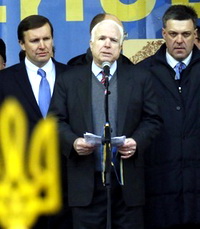
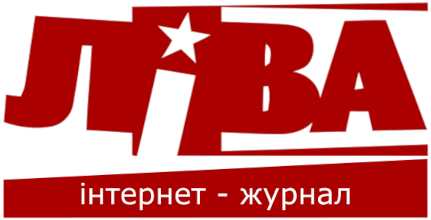










 RSS
RSS

